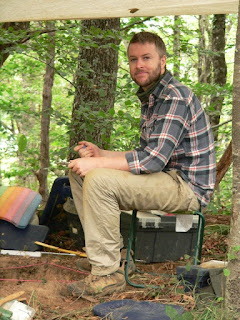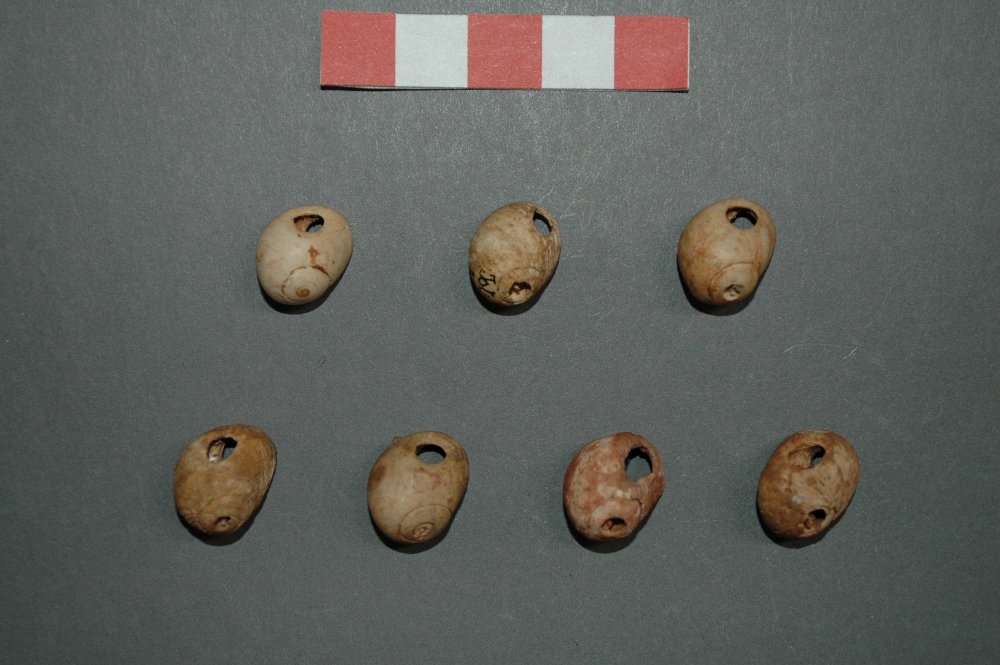Patrice Bonnafoux: John, in the last few years, you've become one of the main players of the Peyre Blanque Archaeological Project, how did you get involved?
John O'Hara: Back in 2011, I was a grad student at New York University (NYU) and was trying to formulate a research project for my dissertation, and came to the realization that the Magdalenian was the period I needed to work on to address the types of question I'm interested in.
At the time, I had worked for a few years on some fantastic Aurignacian sites in France, but had never excavated at a Magdalenian site, so I began asking around for projects to get involved with.
I ran into Seb Lacombe at a workshop in Toulouse (France), who invited me to the excavations at Peyre Blanque that summer, and they haven't been able to get rid of me since.
Patrice Bonnafoux: What was for you the major appeal of the project?
John O'Hara: For me, it was the right project with the right people at the right time. The excavation is still a relatively young project, and was just starting to expand in terms of personnel and scope, so it was an exciting time to be there.
They were obviously a fantastic crew as well, welcoming and yet very, very good at what they do. I learned a lot working alongside the team, furthering my own research as well as the excavation, and I had a lot of fun doing so.
Though we do not yet fully understand every aspect of the site, it is clearly something important, and every year we learn a lot of new things, another reason to keep coming back!
Patrice Bonnafoux: Can you tell us more about your own research and how you tie it to your work at Peyre Blanque?
John O'Hara: I work on Magdalenian personal ornaments (essentially, objects used to decorate the body or clothing, such as beads or pierced shells or teeth), but what I'm really interested in is how those objects reflect social organization.
Ornaments are a great indicator of how individuals understand their own identity and that of different groups across the landscape. I'm studying a huge collection of these objects from France and Spain to try to reconstruct these social relationships, and see how they change across space or through time.
I'm also using stable isotope geochemistry to identify the geographic source of a number of pierced animal teeth, used as pendants. We suspect that a lot of people were moving around quite a lot throughout France and Spain, if they were wearing these ornaments while doing so, they should provide a great proxy for human mobility patterns.
Although we have not (yet) recovered any personal ornaments from Peyre Blanque, these objects can only really be understood within their social and cultural context - Peyre Blanque is shedding new light on who the Magdalenians were, and that plays into how we understand the record as a whole.
Patrice Bonnafoux: Peyre Blanque is an expanding project and also a field school which means more supervision work for senior staff like you, how do you feel about that new role?
John O'Hara: I feel that Pat does most of the hard work!
Almost any excavation will have a number of inexperienced people, and we've been very lucky that our field-school students have generally been very conscientious and capable, as that certainly makes supervision easier.
They also tend to be curious and interested in learning more, which makes supervision fun. It can be a really useful exercise trying to explain things we take for granted - such as site formation processes or lithic technology - to someone who has no background in that area, as it forces you to conceptualize things in new ways, and sometimes even reconsider your interpretation of something.
I have no doubt that several of our students will go on to work in archaeology, and run projects of their own one day - I just hope they remember to always include a 'chocolatine' break at eleven.
 John O'Hara is a doctoral
candidate in archaeology at NYU, his main research interest is in Upper Palaeolithic and Mesolithic
Europe.
John O'Hara is a doctoral
candidate in archaeology at NYU, his main research interest is in Upper Palaeolithic and Mesolithic
Europe. His dissertation focuses on social geographies in Late Glacial Franco-Cantabria, using typo-technological variation in personal ornaments to address questions of cultural identity, and strontium and oxygen stable isotopes to reconstruct patterns of exchange and mobility.





No comments:
Post a Comment